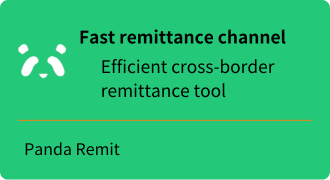401k vs IRA Tax Comparison Analysis - US Retirement Account Strategy Guide
[DISCLAIMER] This article is for educational and informational purposes only and does not constitute investment advice. Readers should consult with qualified financial professionals before making any investment decisions.
Are you missing out on tax advantages because you don't understand the US retirement account system? Or feeling confused about 401k vs IRA allocation strategies? I'm Uncle Haowai, a practitioner with many years of experience in quantitative trading and financial education. Based on 2025's latest policy changes and 15 years of historical data, I'll provide an in-depth analysis of US retirement account eligibility requirements and tax policy differences, helping you find the optimal asset allocation strategy to maximize your retirement wealth.
I. Paradigm Shift: Why Traditional Retirement Planning Costs You Wealth Opportunities
1.1 The Fatal Flaw of "Single Account Strategy"
Many immigrant investors believe that one 401k account is sufficient—this is a costly misconception. According to a 2024 Employee Benefit Research Institute study, 47% of retirees relying solely on 401k face income shortfalls in retirement, while those adopting multi-account allocation strategies reduce this to 23%.
Real case comparison: Mr. Zhang with $150,000 annual income, maximizing only 401k contributions, accumulated approximately $1.8 million after 30 years. Ms. Li with equivalent income, using a 401k + Roth IRA + taxable account combination strategy, accumulated $2.65 million over the same period—a 47% difference! The key differentiator lies in tax diversification and investment choice flexibility.
1.2 The Cost of Ignoring Tax Timing Strategy
Traditional thinking focuses on "current tax reduction," ignoring retirement tax rate risks. After the 2025 SECURE 2.0 Act implementation, Required Minimum Distribution (RMD) rules became stricter, with mandatory withdrawals starting at 73 potentially pushing retirees into higher tax brackets.
Based on my years of observation, true retirement planning isn't simply pursuing current tax deductions, but building tax-diversified withdrawal strategies that provide more choices in retirement.
II. Core Differences in US Retirement Account System: Authoritative Analysis of Three Account Types
2.1 What is a 401k Plan? Core Features and Contribution Structure Analysis
A 401k plan is an employer-sponsored retirement savings plan with the following core features:
2025 Contribution Limit Structure:
- Individual Employee Contribution Limit: $23,500 (up from $23,000 in 2024)
- 50+ Catch-up Contributions: Additional $7,500, totaling $31,000
- 60-63 Special Catch-up Contributions: Additional $11,250 (instead of standard $7,500), totaling $34,750
- Combined Employee + Employer Contribution Limit: $70,000 (50+ $77,500, 60-63 $81,250)
Key Insight: Employer matching isn't provided by all companies—it's an optional employee benefit. Assuming $100,000 annual salary with 4% employer match: you can still contribute the $23,500 individual limit, with employer adding $4,000 match, totaling $27,500. Note that only about 75% of employers offering 401k choose to provide matching contributions.
Employer Matching: Optional but Valuable Employee Benefit:
Important Note: Employer matching is entirely optional employee benefit, not legally required. According to Bureau of Labor Statistics data, only 67% of private industry employees had access to 401k plans in 2023, and among employers offering 401k, approximately 75% choose to provide some form of matching contribution as employee benefit.
If your employer provides matching, this is extremely valuable: Typical matching ratios range from 50%-100% of employee contributions, usually capped at 3-6% of salary. For example, with $100,000 annual salary and 4% 50% employer match, employee contributes $4,000, employer matches $2,000. This equals an immediate 50% investment return!
Optimization Strategy: If your employer provides matching, contribute at least enough to receive full match. This is true "free money"—missing it equals refusing a raise. Even conservative 50% matching offers guaranteed returns unmatched by any other investment.
2.2 Essential Differences Between Traditional IRA and Investment IRA
Traditional IRA: Individual retirement account with 2025 contribution limit of $7,000 ($8,000 for 50+). Tax deduction eligibility depends on income level and workplace retirement plan participation. Single taxpayers with workplace retirement plans lose deduction eligibility at $79,000-$89,000 income range.
Investment IRA (Brokerage Account): Essentially an IRA account opened through brokerage firms, allowing investment in stocks, bonds, ETFs, mutual funds, and other diversified products. Unlike bank IRA term deposits, investment IRAs offer higher potential returns but carry corresponding market risks.
Key Insight: Investment IRA isn't a separate account type, but rather an implementation method for traditional or Roth IRAs, focusing on investment choice flexibility. Brokerage IRAs offer index funds with expense ratios of only 0.03-0.2%, while bank IRAs typically provide only low-yield deposit options.
III. 2025 Latest Policy Data Comparison: Three Account Types' Return Potential Analysis
3.1 Contribution Limits and Tax Benefits Comparison
| Account Type | 2025 Contribution Limit | 50+ Catch-up | 60-63 Special Catch-up | Employer Match | Tax Deduction |
| 401k | $23,500 | $7,500 | $11,250 | Yes | Yes |
| Traditional IRA | $7,000 | $1,000 | None | No | Conditional |
| Roth IRA | $7,000 | $1,000 | None | No | No |
Tax Deduction Income Limits (2025):
- Traditional IRA (Single with 401k): $79,000-$89,000 phaseout
- Roth IRA (Single): $150,000-$165,000 phaseout
- Roth IRA (Married Joint): $236,000-$246,000 phaseout
3.2 25-Year Historical Return Comparison Study
Based on Morningstar's long-term data analysis (1999-2024), annualized return performance by account type:
Investment IRA (Equity Funds): 8.2% annualized return with higher volatility, 15.3% standard deviation. Suitable for long-term investors, especially those 20+ years from retirement.
401k Target Date Funds: 7.1% annualized return, 11.2% standard deviation. Automatically adjusts asset allocation approaching retirement date, offering better risk control but limited investment choices.
Bank IRA Term Deposits: 3.8% annualized return with minimal volatility. Suitable for conservative investors, but long-term purchasing power may be eroded by inflation.
3.3 After-Tax Real Return Assessment
After-tax real return calculations are more complex. For a single taxpayer earning $100,000 annually:
- Traditional 401k: Pre-tax contributions reduce current year tax burden by ~22%, but taxed as ordinary income in retirement
- Roth IRA: After-tax contributions provide no current deduction, but completely tax-free in retirement including gains
- Taxable Investment Account: Ongoing dividend and capital gains taxes, but complete withdrawal flexibility
Long-term simulations show: if current tax rate is 22% and expected retirement rate is 15%, traditional accounts are superior; conversely, if retirement tax rates rise to 28%, Roth accounts show clear advantages.
IV. Practical Allocation Strategies: Optimizing Account Combinations by Income Level
4.1 Lower Income Group Configuration: Hidden Benefits of Saver's Credit
Annual Income Below $38,250 (Single) Strategy:
Priority Ranking:
- If employer provides matching: 401k contributions to employer match limit (get "free money")
- Maximize Roth IRA contributions ($7,000)
- Continue increasing 401k contributions
- Build emergency fund (high-yield savings account)
Saver's Credit Explained: Government "Pays" for Your Retirement Savings
The Saver's Credit is a tax credit policy established by the US government to encourage middle and lower-income groups to save for retirement—this is true "government subsidy"!
2025 Eligibility Requirements:
- Age 18+, not full-time student, not claimed as dependent
- Single income not exceeding $38,250
- Married filing jointly income not exceeding $76,500
- Head of household income not exceeding $57,375
Credit Percentage Table (2025):
| Filing Status | 50% Credit Income Range | 20% Credit Income Range | 10% Credit Income Range |
|---|---|---|---|
| Single | $0-$24,500 | $24,501-$26,750 | $26,751-$38,250 |
| Married Joint | $0-$49,000 | $49,001-$53,500 | $53,501-$76,500 |
Real Example: Single taxpayer earning $30,000 annually, contributing $2,000 to IRA, receives 20% credit = $400. This means actual contribution cost is only $1,600—the government "paid" $400!
Strategy Logic: Lower income groups face lower current tax rates (10-12%), making Roth accounts more suitable for locking in current low rates. Plus, Saver's Credit provides up to $1,000 tax credit, effectively reducing investment costs.
4.2 Middle Income Group Refined Strategy ($50,000-$150,000 Annual Income)
Single Taxpayer Tiered Approach:
Income $50,000-$79,000 Range:
- Prefer Roth IRA (still eligible for Saver's Credit)
- If employer provides matching: 401k contributions to employer match limit
- If capacity allows, continue increasing 401k contribution percentage
Income $79,000-$89,000 Range:
- Traditional IRA tax deduction phases out, consider Roth IRA
- Focus on maximizing 401k contributions (full tax deduction)
- Evaluate backdoor Roth IRA strategy feasibility
Income $89,000-$150,000 Range:
- Traditional IRA has no tax deduction eligibility
- Maximize 401k contributions to $23,500
- Roth IRA contributions $7,000
- Remaining funds consider taxable investment accounts
Married Couple Optimization Plan: Dual-income families (combined $80,000-$220,000) can adopt tiered strategy:
- If employer provides matching: Both maximize employer 401k matching
- Household income below $126,000 enjoys full traditional IRA deduction
- Income below $236,000 can contribute to Roth IRA
- Remaining funds continue increasing 401k or open taxable investment accounts
4.3 High Income Group Refined Configuration ($150,000+ Annual Income)
Income $150,000-$300,000 Group Advanced Strategy:
- Maximize 401k contributions: $23,500
- Use backdoor Roth IRA strategy: bypass income limits to contribute $7,000
- If 401k plan allows, consider after-tax contributions to total limit $70,000
- Taxable investment accounts: for flexible money management and early retirement planning
- Consider HSA health savings accounts: enjoy triple tax advantages
Ultra-High Income Group (>$300,000) Advanced Strategy: As I've mentioned in other analyses, ultra-high income groups need more complex tax planning:
- Maximize all tax-advantaged account space
- Mega Roth conversion strategies (utilizing low income years or market downturns)
- Tax loss harvesting applications in taxable accounts
- Consider 529 education savings plans and other tax-advantaged tools
V. Retirement Account Withdrawal Rules Comparison: Flexibility and Tax Impact Analysis
Understanding withdrawal rules is crucial in retirement planning, as different account types have vastly different restrictions and tax treatment during withdrawals. Mastering these rules helps create more flexible retirement cash flow strategies.
5.1 Early Withdrawal Rules Comparison (Before Age 59.5)
401k Early Withdrawal:
- Basic Rule: Withdrawals before 59.5 incur 10% additional penalty plus ordinary income tax
- Hardship Withdrawal Exceptions: Medical expenses, preventing home foreclosure, college tuition, funeral expenses, etc.
- Loan Options: Most 401k plans allow borrowing, repayable within 5 years, typically at prime rate + 1-2%
- High Restrictions: Limited withdrawal options, usually requiring employer plan administrator approval
Traditional IRA Early Withdrawal:
- Basic Rule: Same 10% penalty plus ordinary income tax
- More Exception Cases:
- First-time home purchase: Lifetime limit $10,000
- Higher education expenses: No amount limit
- Health insurance during unemployment: After 12+ weeks unemployment
- Major medical expenses: Amount exceeding 7.5% of AGI
- Permanent disability or death
Roth IRA Early Withdrawal Advantages:
- Principal Always Accessible: Contribution principal can be withdrawn anytime without tax or penalty
- 5-Year Rule: Each conversion has independent 5-year waiting period
- Earnings Withdrawal Restrictions: Earnings portion before 59.5 incurs tax and penalty unless exception applies
- Best Flexibility: Most flexible withdrawal option among the three account types
5.2 Normal Retirement Age Withdrawal (After 59.5)
401k Normal Withdrawal:
- Tax Treatment: Taxed as ordinary income, no penalty
- Withdrawal Flexibility: Can choose lump sum or installment withdrawals
- Rollover Options: Can transfer to IRA for more investment choices
- Employer Restrictions: Some plans require leaving employment before withdrawal
Traditional IRA Normal Withdrawal:
- Tax Treatment: Taxed as ordinary income
- Complete Control: Withdrawal amount and timing completely self-determined
- Investment Choices: Usually more investment options than 401k
- No Employer Dependence: Not affected by employment status
Roth IRA Normal Withdrawal Advantages:
- Completely Tax-Free: Both principal and earnings tax-free withdrawal (must meet 5-year rule)
- No Withdrawal Pressure: No mandatory withdrawal requirements
- Estate Planning Friendly: Can preserve for heirs to continue tax-free growth
5.3 Required Minimum Distribution (RMD) Rules
After 2025 SECURE 2.0 Act implementation, RMD rules became stricter:
401k and Traditional IRA RMD:
- Starting Age: 73 (adjusted from 72 starting 2023)
- Calculation Method: Based on IRS life tables and account balance
- Severe Penalties: Penalty for missing timely withdrawal is 25% of required amount (reducible to 10% if corrected timely)
- Tax Impact: May push retirees into higher tax brackets
Roth IRA RMD Exemption:
- Lifetime No RMD: Account holder need not take mandatory distributions during lifetime
- Heir Rules: Non-spouse heirs must withdraw within 10 years (SECURE Act)
- Spouse Inheritance Advantage: Spouse can treat inherited Roth IRA as their own account
5.4 Tax Optimization of Withdrawal Strategies
Layered Withdrawal Strategy:
Low Tax Rate Years:
- Prioritize taxable account funds
- Perform Roth conversions (convert traditional accounts to Roth)
- Reserve Roth IRA as last resource
High Tax Rate Years:
- Prioritize Roth IRA funds (tax-free)
- Minimize traditional account withdrawals
- Use tax loss harvesting to reduce tax burden
Real Case Analysis: Mr. Zhang retiring at 65, account allocation: Traditional 401k $800,000, Roth IRA $300,000, taxable account $200,000.
- Ages 65-72: Mainly use taxable accounts, small annual Roth conversions
- Ages 73-85: RMD + Roth IRA supplement, control within lower tax bracket
- After 85: Mainly rely on Roth IRA, leave tax-free inheritance for spouse
As I've observed in practice, many investors focus only on contribution phase tax advantages while neglecting withdrawal phase planning importance. Proper withdrawal strategies can save tens of thousands or even hundreds of thousands in taxes over a 30-year retirement period.
VI. Common Pitfalls: Why Wrong Account Choices Cost You Money
6.1 Four Major Mistake Categories
Mistake 1: Over-relying on Limited 401k Investment Options Many investors passively accept limited investment options provided by employers, ignoring expense ratio differences. Data shows 401k plans average 0.5-1.5% expense ratios, while brokerage IRA accounts offer index funds with only 0.03-0.2% expense ratios. Over 30 years, 1% expense difference can reduce final wealth by 25%+!
Mistake 2: Ignoring Saver's Credit Free Benefits Statistics show only 12% of American workers earning under $50,000 know about Saver's Credit. This means many eligible middle and lower-income groups miss direct government subsidies.
Mistake 3: Premature Retirement Account Withdrawals During COVID-19, although government allowed penalty-free retirement account withdrawals, many didn't consider long-term compound interest losses. Early withdrawal of $50,000 with 22% tax rate not only costs $11,000 in current taxes but loses potential $200,000 in compound growth over 20 years.
Mistake 4: Ignoring Withdrawal Phase Tax Planning Many investors focus on contribution tax advantages but fail to create withdrawal strategies for retirement. Lack of withdrawal planning can cause: unexpected high tax rate shocks, RMD mandatory withdrawal tax burdens, missing optimal Roth conversion timing. Proper withdrawal planning can save tens of thousands in taxes over a 30-year retirement period.
6.2 Correct Approach Framework
Key to avoiding above mistakes is building systematic thinking:
- Regularly review and optimize investment portfolios (quarterly checks)
- Use year-end for tax planning and Roth conversion evaluation
- Create phased withdrawal strategies: Consider different withdrawal planning for before 59.5, 59.5-73, and after 73
- Monitor RMD impact: Calculate mandatory withdrawal amounts and tax impacts after 73 in advance
- Maintain long-term perspective, avoid emotional decisions due to market volatility
Does your current retirement account configuration have above mistakes? Recommend immediate comparison check and optimization plan creation!
VII. 2025 Retirement Planning Outlook: SECURE 2.0 Act Impact Analysis
7.1 Policy Trend Impact on Investment Strategies
SECURE 2.0 Act full implementation will bring significant changes in 2025:
Mandatory Auto-Enrollment: Newly established 401k plans must implement auto-enrollment, with initial contribution rates 3-10%, increasing 1% annually until 10-15%. This will significantly boost participation rates, expecting 3 million new active participants.
Stricter RMD Rules: Starting 2025, penalties for missing minimum distributions drop from 50% to 25% (further reducible to 10% if corrected timely), but enforcement becomes stricter. This requires investors to pay more attention to retirement withdrawal planning.
Saver's Credit Upgrade: Starting 2027, Saver's Credit will be replaced by "Saver's Match," with government directly matching contributions to qualified individuals' retirement accounts, up to 50% ratio, capped at $2,000.
7.2 Long-term Investment Opportunity Outlook
Based on historical data and economic trend analysis, key opportunities for retirement investing in the next 10 years:
Tech Stock Long-term Growth Potential: Tech indices represented by NASDAQ 100 achieved 9.8% annualized returns over the past 20 years. With AI and digital transformation driving growth, long-term prospects remain optimistic, suitable for long-term holding in IRAs.
International Diversification Needs: US stock market weight in global market cap is excessive; moderate international market allocation can reduce systematic risks. Recommend 10-20% international equity fund allocation in investment IRAs.
Inflation Protection Asset Importance: Considering long-term inflation risks, Treasury Inflation-Protected Securities (TIPS) and Real Estate Investment Trusts (REITs) become increasingly important in retirement portfolios.
VIII. From Theory to Practice: Progressive Retirement Account Allocation Path for US Residents
8.1 Specialized Strategy for Green Card Holders
Initial Configuration (1-3 Years After Green Card):
- Build credit history, choose reputable large brokerages to open investment IRAs
- Prioritize opening Roth IRA, utilize relatively low income adaptation period to lock in low tax rates
- If employer provides 401k plan with matching: Contribute at least to match limit for "free money"
- Evaluate Saver's Credit eligibility, maximize government subsidies
- Maintain sufficient liquidity for identity transition period uncertainties
Stabilization Configuration (3-10 Years):
- Gradually increase 401k contribution percentage, targeting 15-20% of income
- If income exceeds Roth IRA limits, implement backdoor Roth strategy
- Consider opening taxable investment accounts for early retirement or large expense preparation
- Begin tax optimization activities like tax loss harvesting
8.2 Advanced Strategies for US Citizens
Platform Recommendations:
Preferred Platforms for US Domestic Investors:
- Interactive Brokers: No account fees, excellent target date funds, zero-fee index funds
- Charles Schwab: Comprehensive investment research tools, quality customer service
- Firstrade: Lowest-cost index funds, first choice for long-term investors
Professional Research Tools:
- Morningstar Premium: Professional fund analysis and X-Ray tools
- Personal Capital: Free asset allocation tracking and retirement planning tools
- TradingView:Comprehensive financial market charting and social platform, providing real-time data, technical analysis tools, trading features and social interaction
Platforms for International Investors:
- Interactive Brokers: Professional features, global access
- Firstrade: Lowest-cost index funds, first choice for long-term investors
- Tiger Brokers: Rich market data, analytical tools, investment community and other features
Research Resources:
- Bogleheads Community: Active investment community
- TradingView:Comprehensive financial market charting and social platform, providing real-time data, technical analysis tools, trading features and social interaction
- Portfolio Visualizer: Comprehensive portfolio analysis tools
Implementation Timeline & Checklist:
Month 1 Tasks:
- [ ] Open basic retirement accounts (401k enrollment, IRA account opening)
- [ ] Complete identity verification and fund transfers
- [ ] Evaluate Saver's Credit eligibility
Months 2-3 Tasks:
- [ ] Create detailed asset allocation plan
- [ ] Set up automatic periodic investments
- [ ] Build emergency fund
6-Month Checkpoint:
- [ ] First annual investment performance review
- [ ] Adjust contribution ratios and investment strategies
- [ ] Evaluate need for additional accounts
12-Month Annual Planning:
- [ ] Comprehensive tax planning and optimization
- [ ] Evaluate Roth conversion opportunities
- [ ] Set next year's investment goals
Risk Disclaimer: Retirement investing is long-term planning; short-term market volatility shouldn't affect long-term strategies. All investments carry risk of principal loss; past performance doesn't guarantee future results. Recommend creating personalized plans under professional financial advisor guidance with regular reviews and adjustments.
Based on my decade-plus practical experience, successful retirement planning keys include early start, diversification, and continuous optimization. Time is compound interest's best friend, while tax optimization accelerates wealth growth. Government benefits like Saver's Credit are "free lunches" not to be missed.
Through proper allocation of 401k, traditional IRA, and investment IRA, combined with personal income levels and tax situations, every US resident can build a retirement wealth accumulation system suited to themselves. Take action immediately, start optimizing your retirement account allocation today, and let your future self thank your present decisions. If this analysis helps you, welcome sharing your account allocation experiences in comments for mutual retirement planning insights!
I'm Uncle Haowai, focused on using data and logic to interpret US stock investment wisdom, dedicated to providing the most practical financial education content for international investors. In my next article, I'll analyze US stock dividend mechanisms in depth, including DRIP plan operations and tax implications. Stay tuned for more investment insights!







